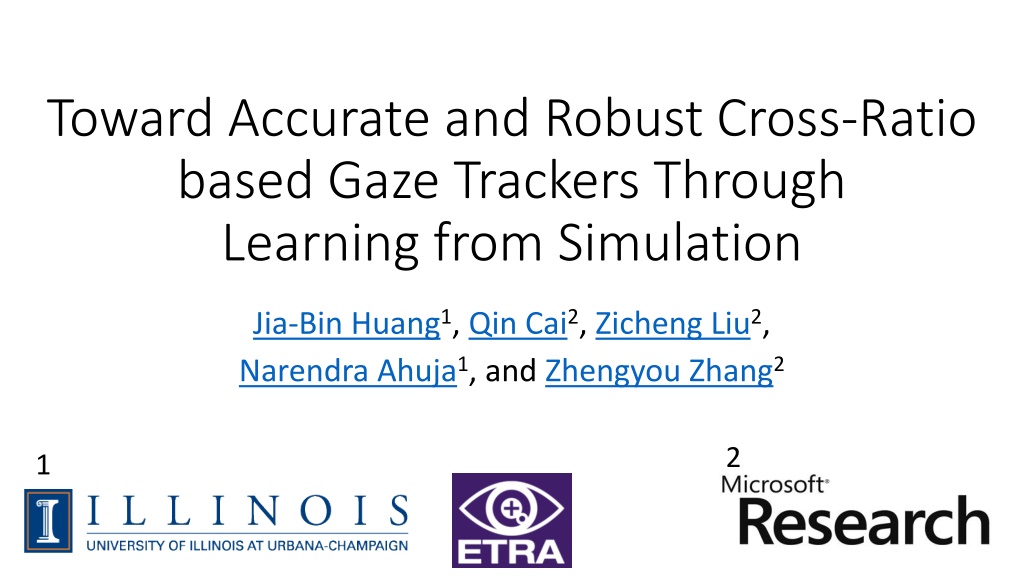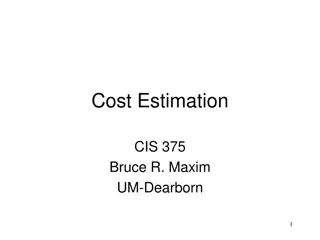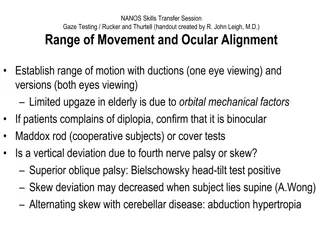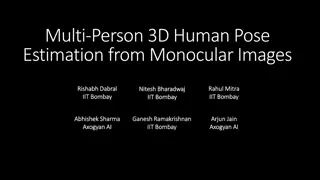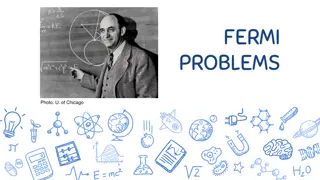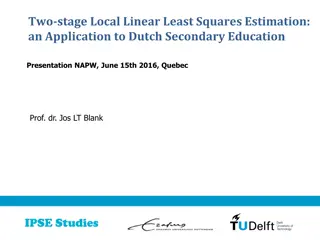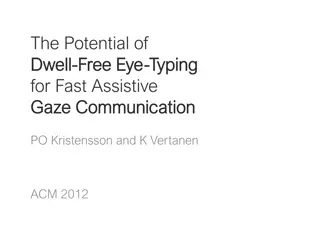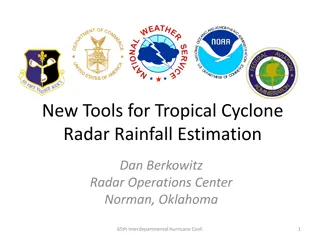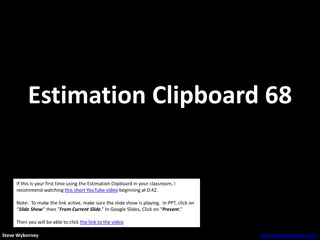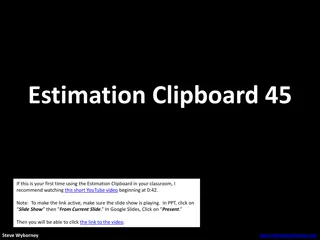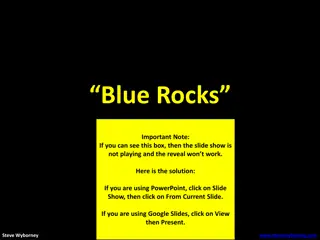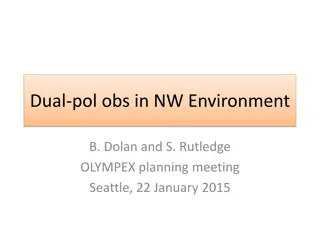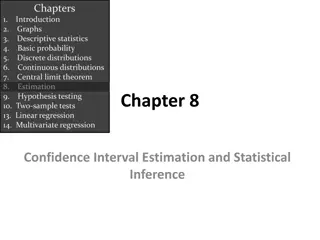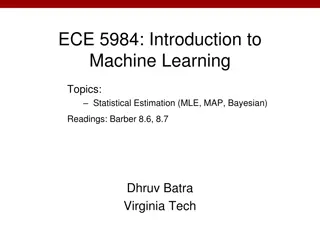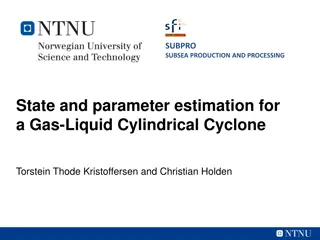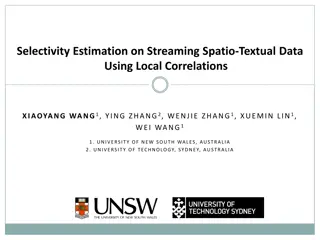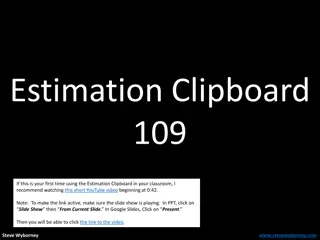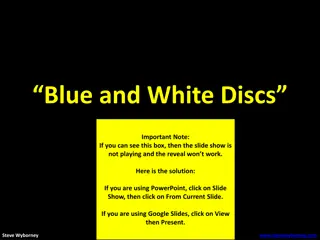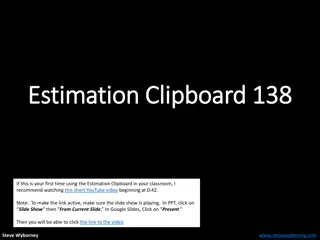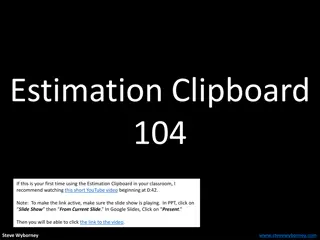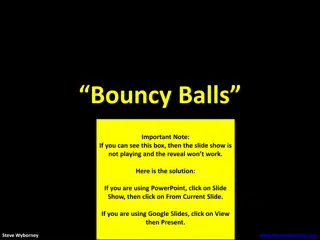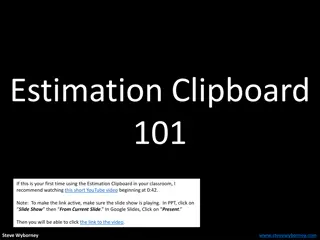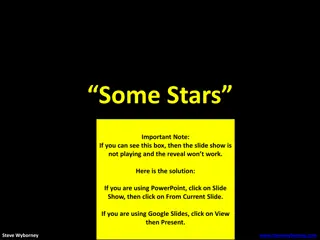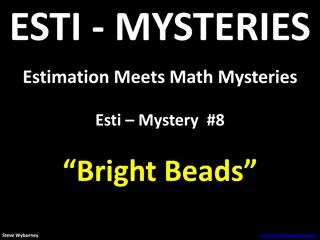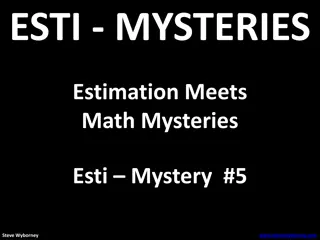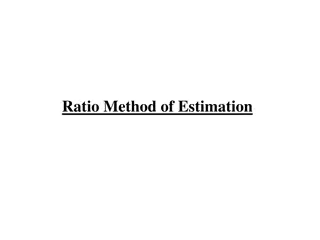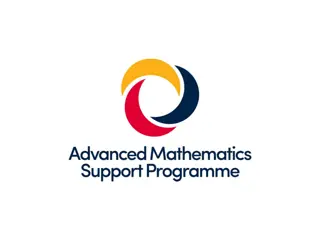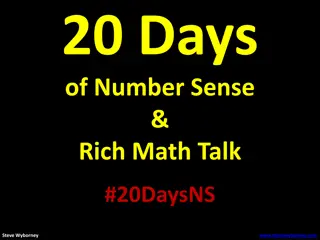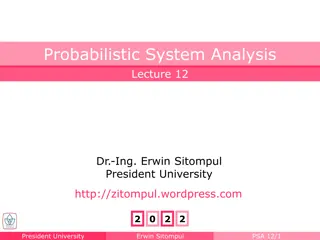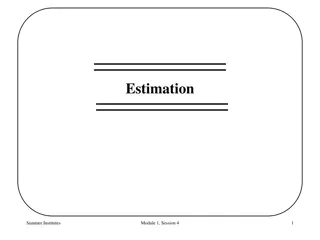Advanced Gaze Estimation Techniques: A Comprehensive Overview
Explore advanced gaze estimation techniques such as Cross-Ratio based trackers, Geometric Models of the Eye, Model-based Gaze Estimation, and more. Learn about their pros and cons, from accurate 3D gaze direction to head pose invariance. Discover the significance of Glint, Pupil, Iris, Sclera, and Cornea in gaze tracking and how different models handle hardware calibration. Dive into methodologies like Interpolation-based Gaze Estimation and Cross-Ratio based Gaze Estimation, offering insights into error sources and subject-dependent biases.
Download Presentation

Please find below an Image/Link to download the presentation.
The content on the website is provided AS IS for your information and personal use only. It may not be sold, licensed, or shared on other websites without obtaining consent from the author. Download presentation by click this link. If you encounter any issues during the download, it is possible that the publisher has removed the file from their server.
E N D
Presentation Transcript
Toward Accurate and Robust Cross-Ratio based Gaze Trackers Through Learning from Simulation Jia-Bin Huang1, Qin Cai2, Zicheng Liu2, Narendra Ahuja1, and Zhengyou Zhang2 http://jeyaganesh.in/blog/wp-content/uploads/2011/07/microsoft_research_logo.jpg 2 1
Glint Pupil Iris Limbus Sclera Cornea (like a spherical mirror) Mike @ Monster University
Gaze Estimation using Pupil Center and Corneal Reflections Interpolation- based Model-based Cross-Ratio based
Model-based Gaze Estimation Detailed geometric modeling between light sources, corneal, and camera [Guestrin and Eizenman, 2006] Pros Accurate (reported performance < 1o) 3D gaze direction Head pose invariant Cons Need careful hardware calibration Figure from [Guestrin and Eizenman, 2006]
Interpolation-based Gaze Estimation Learn polynomial regression from subject-dependent calibration Directly map from normalized to Point of Regard (2D PoR) [Cerrolaza et al., 2008] Pros Simple to implement No need for hardware calibration Cons Head pose sensitive
Cross-Ratio based Gaze Estimation Gaze estimation by exploiting invariance of a plane projectivity [Yoo et al. 2002] Pros Simple to implement No need for hardware calibration Head pose invariant Cons Large subject dependent bias occur because simplifying assumptions Figure from [Coutinho and Morimoto 2012]
The Basic Form of Cross-Ratio Method Display Corneal Image
Two Sources of Errors [Kang et al. 2008] Angular deviation of visual axis and optical axis Virtual image of pupil center is notcoplanar with corneal reflections
Improve Accuracy for Stationary Head Homography correction + Residual interpolation CR-HOMN [Hansen-2010] Homography correction CR-HOM [Kang-2007] Scale and translation correction CR-DV [Coutinho-2006] Scale correction CR-Multi [Yoo-2005] No correction CR [Yoo-2002]
Improve Robustness for Head Movements No adaptation Adapt to eye depth variations Adapt to eye movements Assumptions 1) weak perspective 2) fixed eye parameters. CR-DD [Coutinho and Morimoto 2010] PL-CR [Coutinho and Morimoto 2012] CR [Yoo-2002]
Accuracy of Gaze Prediction for Stationary Head Homography correction + Residual interpolation CR-HOMN [Hansen-2010] Homography correction CR-HOM [Kang-2007] PL-CR [Coutinho-2012] This paper Scale and translation correction CR-DV [Coutinho-2006] CR-DD [Coutinho-2010] Scale correction CR-Multi [Yoo-2005] Robustness to Head Movement No correction CR [Yoo-2002] Adapt to eye movements Assumptions 1) weak perspective 2) fixed eye parameters. Adapt to eye movements No assumptions on 1) weak perspective 2) fixed eye parameters Adapt to eye depth variations only No adaptation
How? The Main Idea Build upon the homography normalization method [Hansen et al 2010] Improving accuracy and robustness simultaneously by introducing the Adaptive Homography Mapping
Adaptive Homograph Mapping Two types of predictor variables : capture the head movements relative to the calibration position Affine transformation between the glints quadrilateral : capture gaze direction for spatially-varying mapping Pupil center position in the normalized space : polynomial regression of degree two with parameter
Training Adaptive Homography Mapping Exploit large amount of simulated data the set of sampled head position in 3D the set of calibration target index in the screen space Objective function
Minimizing the Objective Function Minimize an algebraic error at each sampled head position Use the solution from algebraic error minimization as initialization Minimize the re-projection errors using the Levenberg-Marquardt algorithm
Visualize the Training Process Eye gaze prediction results using the bias-correcting homography computed at the calibration position
RMSE Error Comparisons Using Different Training Models Differences are small in linear regression Linear model is not sufficiently complex Compensation using both predictor variables achieve the lowest errors
Linear Regression Adding the normalized pupil center corrected spatially-varying errors
Experimental Results Synthetic data Setup Screen size 400mm x 300mm Four IR lights Camera 13mm focal length, placed slighted below the screen border (FoV~31 degree) Calibration position and eye parameters Eye parameters from [Guestrin and Eizenman, 2006]
Stationary Head Varying corneal radius
Stationary Head Varying pupil-corneal distance
Stationary Head Varying (horizontal) angle between optical/visual axis
Stationary Head Varying (vertical) angle between optical/visual axis
Effect of Sensor Resolution (at calibration) Focal Length = 13 mm Focal Length = 35 mm
Effect of Sensor Resolution (at new position) Focal Length = 13 mm Focal Length = 35 mm
Real Data Evaluation Programmable Hardware Setup Off-axis IR light sources On-axis ring light Stereo camera (We use one only in this work)
Real Data Evaluation Feature Detection Detecting glints and pupil center
Averaged Gaze Estimation Error at calibration position
Averaged Gaze Estimation Error Calibrated at 500mm from screen Calibrated at 600mm from screen
Conclusions A learning-based approach for simultaneously compensating (1) spatially varying errors and (2) errors induced from head movements Generalize previous work on compensating head movements using glint geometric transformation [Cerroaza et al. 2012] [Coutinho and Morimoto 2012] Leveraging simulated data avoid the tedious data collection
Future Work Consider subject-dependent parameters in the learning and inference the adaptive homography adaptation Integrate binocular information, please see poster Zhengyou Zhang, Qin Cai, Improving Cross-Ratio-Based Eye Tracking Techniques by Leveraging the Binocular Fixation Constraint Extensive user study using a physical setup
Comments or questions? Qin Cai Zicheng Liu zliu@microsoft.com Jia-Bin Huang jbhuang1@Illinois.edu qincai@microsoft.com http://jeyaganesh.in/blog/wp-content/uploads/2011/07/microsoft_research_logo.jpg Zhengyou Zhang zhang@microsoft.com Narendra Ahuja n-ahuja@Illinois.edu
